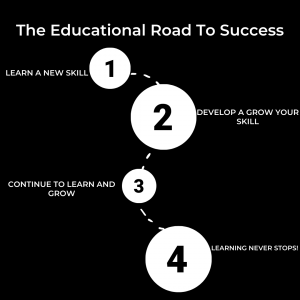Unlocking the Secrets of Oriental Education
Are you intrigued by the mysterious and exotic world of Oriental education? Do you want to discover what makes it so unique and effective? Look no further! Our comprehensive guide will take you on a journey through the rich history, philosophy, and teaching methods that have made Oriental education one of the most sought-after systems in the world.
From Confucianism to Zen Buddhism, from calligraphy to martial arts, we’ll explore every aspect of this fascinating subject. So get ready to unlock the secrets of Oriental education and unleash your full potential!
It is no secret that the East has been a leader in education for centuries. From the time of Confucius to present day, the countries of China, Japan, and Korea have placed a high premium on learning. In recent years, the West has begun to take notice of the successes of Oriental educational systems and has started to adopt some of their practices.
One of the most obvious differences between Eastern and Western education is the way in which knowledge is imparted. In the West, education is often seen as a process of acquiring information from teachers and textbooks.
In contrast, Eastern education emphasizes understanding concepts and ideas rather than memorizing facts. This is reflected in the way Oriental students are taught to think critically and solve problems.
Oriental countries also place a great deal of importance on character development. Students are taught to be respectful, hardworking, and humble. They are also instilled with a sense of filial piety, which includes respect for one’s elders and ancestors. These values are an integral part of Oriental societies and play a big role in shaping the people who live in them.
The academic rigor of Oriental education systems is another area that sets them apart from their Western counterparts. Students in Asia typically attend school for longer hours and have more homework than their counterparts in America or Europe. They also take more exams and face greater competition when applying to universities.
Despite these differences, there are many similarities between Eastern and Western education. Both place an
Historical Overview of Oriental Education
The first schools in China were established over 1,500 years ago during the Han Dynasty. Confucianism was the primary philosophy of education at this time, and it remains an important part of Chinese culture today.
During the Tang Dynasty, Buddhism became a popular religion in China and had a significant impact on education. Buddhist monasteries began to offer education to both monks and laypeople.
In the Song Dynasty, Neo-Confucianism became the dominant philosophical framework for education. This period saw the development of private academies, which were run by scholar-officials and educated elites.
The Ming and Qing Dynasties were marked by political instability and foreign invasions. However, education continued to flourish during this time with the development of new educational institutions such as the Imperial Academy.
Today, China has a thriving educational system with thousands of schools and colleges offering instruction at all levels. While traditional Chinese values still play an important role in education, modern methods and approaches are also being used to meet the needs of 21st century students.
Principles of Oriental Education
Oriental education is based on the principle that the student should be able to learn independently and be self-reliant. This is in contrast to the Western education model, which relies heavily on rote learning and memorization.
In addition, Oriental education emphasizes the importance of developing a strong moral character. Students are taught to be honest, respectful, and considerate of others. They are also expected to uphold the values of their community and contribute to its well-being.
Benefits of Oriental Education
There are many benefits of Oriental education, which has been shown to improve cognitive skills, memory, and critical thinking. Additionally, research suggests that students who receive an Oriental education have higher test scores and grades, and are more likely to pursue higher education.
Oriental education has also been linked with a number of other benefits, including improved mental health, increased self-esteem, and better social skills. Additionally, students who receive an Oriental education often have a greater appreciation for their culture and heritage.
Challenges Faced in the Implementation of Oriental Education
When it comes to implementing Oriental education, there are a few challenges that must be faced. First and foremost, there is the challenge of language barrier. Many of the concepts and texts associated with Oriental education are in languages such as Chinese, Japanese, or Korean. This can make it difficult for educators who are not fluent in these languages to properly teach the material.
Another challenge is the lack of resources. There are not many books or other materials available in English on Oriental education. This makes it difficult for educators to find all the information they need to properly teach the subject matter. Additionally, it can be difficult to find qualified teachers who are able to teach Oriental education effectively.
Finally, there is the issue of cultural differences. Because Oriental education often relies heavily on tradition and culture, it can be difficult to implement in a western setting where these concepts may not be fully understood or appreciated. It is important for educators who wish to implement this type of education to be sensitive to these cultural differences and be prepared to explain them to their students.
Examples of Successful Programs Utilizing Oriental Education
There are many successful programs that utilize Oriental education techniques. Here are just a few examples:
The Montessori Method:
This program is based on the philosophy of Italian physician and educator Maria Montessori. It focuses on individualized instruction and allows children to learn at their own pace.
The Reggio Emilia Approach:
This program, developed in the Italian city of Reggio Emilia, emphasizes collaboration between teachers and students. It also places a strong emphasis on the environment as a learning tool.
The Waldorf Method:
Developed by Austrian philosopher Rudolf Steiner, this program focuses on the whole child – including their social, emotional, and physical needs.
Oriental education offers many advantages over the traditional Western system. From its unique approach to teaching and learning, to its emphasis on cultivating a holistic understanding of life, Eastern educational systems have something valuable to offer those who are looking for a more meaningful approach to education.
With this comprehensive guide we’ve provided you with an abundance of information about different aspects of oriental education, so that you can make an informed decision as to whether or not it is right for you. With the insight gained from this article, we hope that you now feel empowered in your pursuit of knowledge and wisdom!


